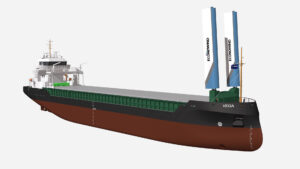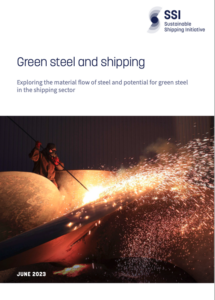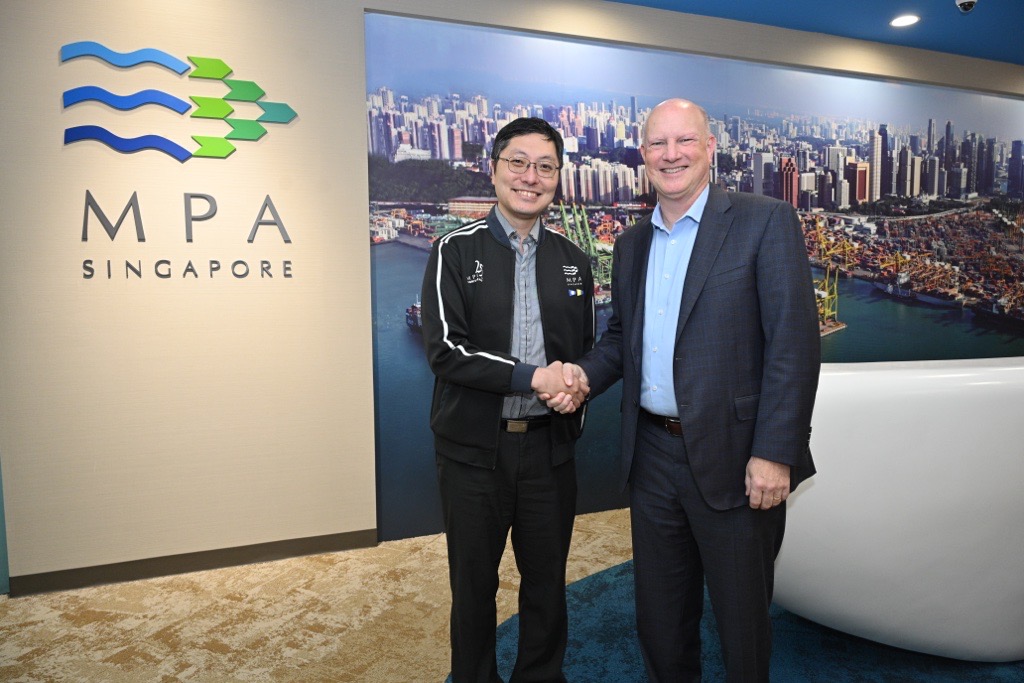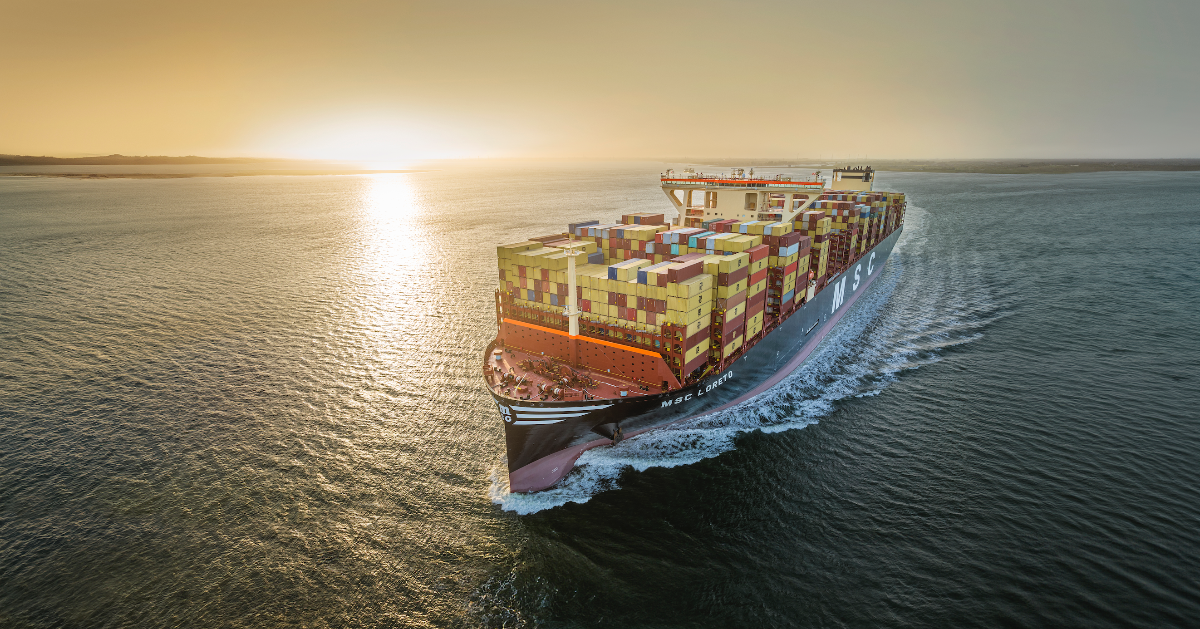About Aronnax episode 8.9 (supported by Lloyd’s Register)
As the shipping industry moves into an age of new fuels, its operations will become less GHG intensive, and interest will move to the next GHG lifecycle factor in the sector – the steel.
The Sustainable Shipping Initiative’s new report on greening the steel and closing the loop so recycled steel can be accounted for was published this month.
In this podcast, supported by Lloyd’s Register, we look into the links that bond the decarbonisation of the steel industry with the shipping industry and what Green Steel means for shipping.
The SSI report “Green Steel and Shipping” can be found here
Show transcript
Craig Eason/Host
Hello and welcome to the Aronnax podcast, your regular audio insight into the transformation of the shipping and ocean space.
My name is Craig Eason and I run the Fathom World website where we report on the news about the technology, people, regulation and policies that make the maritime and ocean sectors cleaner and sustainable.
And in this special episode supported by Lloyd’s Register we are going to focus on sustainable steel, the steel that thousands of ships are made of, and the steel that thousands of ships in the future will still be made of.
Steel is an alloy, but it largely iron, taken from iron ore. Steel making is a hugely carbon intensive industry, and of course a huge customer of the shipping industry as the iron ore and coal is sent to steel mills where it is melted to crude steel, and then into various grades of steel depending on where it is to be used.
There are different grades of steel, something like 3,500, and some of the most specific high-grade steels for shipbuilding. There are also different ways of making steel, one is the blast furnace, where iron ore and coke, made from coal, is added along with limestone to create the liquid crude steel and the so-called slag, which is itself a useful product.
But this process produces large amounts of CO2, as does the next part of the process where the crude steel is refined to remove some of the carbon and other impurities and certain metallic elements added to create the grade of steel needed ahead of rolling shaping and cutting.
Another, more modern process of the steel making is the electric arc furnace, which can use scrap steel as well as crude steel, but does require huge amounts of electricity.
Now in both these processes the steel industry makes different grades of steel, some of which is the very specific grades of steel for shipping, grades which have to meet specific quality and thickness requirements set by classification societies, like Lloyd’s Register.
Shipping industry is not a big customer of the steel industry, which may be a surprise given the amount of steel used in making a hip and the machinery and equipment in it, and also considering the number of ships built every year and the number also scrapped.
Also the life cycle emissions of a ship are mostly from the fuel used in its operations, so what about the lifecycle of the steel. Well as the fuel is decarbonized, the steel production will become the next big challenge. This is why the sustainable shipping initiative has published its recent report on the greening of shipbuilding.
So, in this episode we will look at how the steel in shipping can be more sustainable, how it can be reused, in some cases even back into the shipping industry and why some shipowners and industry associations think it is time to start getting this issue on shipowners minds even before the discussions about decarbonizing fuel use has been resolved.
The report from SSI is its third report on life cycle considerations and component circularity.
Here’s Andreea Miu, at the Sustainable Shipping Initiative.
3’14” Andreea Miu, SSI
We actually started looking into materials 10 years ago. So it’s really not a new topic for SSI, we had a project, it was called the closed loop material management, which was really just trying to be an inventory of all the materials that go into a ship – it was way ahead of its time. And then it’s kind of like, got dropped off, because there’s a lot of effort being put into the whole fuel debate and a lot more effort put into that.
And then it was a couple of years ago, when we started getting back into this whole circularity aspects. There was a lot of work being done in circularity and other industries. But in terms of shipping, there was a bit of a the word there’s definitely initiatives working on circularity in shipping, but it was a bit more like quiet. So, two years ago, we put out a report on circularity in shipping.
e explored how circularity principles can be applied, and we develop the material hierarchy and we looked into the whole hours of material management and all that. And we realised that recycling is really like the last one. And the last, the least efficient from a material management perspective.
So we, we started looking into recycling with that with our report. And we just explored a bit of the end of life models that are currently in existence in shipping. And then based on that, we started seeing an opportunity for green steel or decarbonize steel, whatever terminology ends up being, and then how that can be used in shipbuilding. So we decided to explore it to explore it is something that should the shipping industry can actually do. And if it is something that the shipping industry can adopt.
5’09” Craig Eason
According to the World Steel Association transportation, excluding the automotive sector, but including trains and lorries, accounts for 5% of steel production. So, shipbuilding is a small part of the steel makers customer base, but an important one.
And while international shipping’s emissions are between 2% and 3% of global man-made emissions, the steel industry produces up to 9% of anthropogenic greenhouse gases.
Steel production is, according to the International Energy Agency, set to grow by 30% by 2025, putting even mor pressure on the environment if emissions cannot be cut. But as shipping speeds u the journey to decarbonise its fuel use in the coming decades, then the percentage of greenhouse gases associated to a vessels construction will only increase.
In the steel industry there are movements like Responsible Steel which has now teamed up with the climate group to create SteelZero to promote the industry to reduce its GHG emissions. It’s signatories are companies that say they want to procure and use green steel, thus encouraging steel makers to invest in greenhouse gas reduction targets.
For its part the steel industry is investing in sustainability, for example in finding new ways to generate the steel using hydrogen. It’s being also pushed by the financial markets which, inspired by the Poseidon Principles in shipping, have now developed the sustainable steel principles. To date there are six banks that are signatories.
There are then two parts to this story. On the one hand there’s the interest in using steel that has been produced with lower greenhouse gas emissions, and then there’s the way the steel in a vessel, can be recycled and reused.
The majority of large ships are built in China, South Korea or Japan. Most are however scrapped in India, Bangladesh or Turkey.
To be able to close the steel loop in the shipping industry would require scrapping a ship and then reusing the steel, most likely by shipping it to steel maker for mixing with new steel.
The steel industry is trying o do that in a bid to reduce its carbon footprint, but it might not make sense to do this given the emissions related to shipping steel from a shipbreaking country to a steel making one close to a shipyard.
One of the SSI members, and a signatory of Steel Zero is AP Moller Maersk. Nicolo Aurisano has been looking at this issue.
7’52” Nicolo Aurisano, AP Moller Maersk
“The Maersk focus as well as the entire industry focus has been on fuels alternative fuels, since more than 90% of our GHG emissions come from fuel combustion.
At the same time, the more we move into alternative fuels in the future, and low carbon fuels, the fraction of the total contribution of the steel that we use in our vessel will increase and will be relevant, and considering the long life cycle, and the long lifetime of a vessel, which is up to 2025 years.
I guess that’s it’s right, and it’s about time to start moving forward with the new vessels. And starting with investigating the sector, because the focus has been for too many years, and is clean has been for mainly on the fuels. But there are also other contributors and the steel is one of them.
From a shipowner perspective, closing that loop from the scrapping the vessel and putting the steel into new building new vessel is going to be a big challenge, and if not almost impossible, closing the physical loop, because here the problem, there is an intrinsic problem that the location of the shipbuilding location of the scrap yards are very far.
Usually ships are scrapped in Turkey or India and built in China, South Korea or Japan.
So does it make any sense to ship, to transport the scrap, from India all the way to South Korea? Because probably the emissions that you get in shipping the steel are probably higher than the emission that you get from using directly primary steel.
One of the outcomes of this report was to highlight how the maritime sector can still play a role in the circular economy of steel by simply plugging in the two ends of this linear supply chain, life cycle, so, when we get to the to the to the shipyard for the scrapping, we need to optimise the way that the steel is entering in the cycle of the steel industry.
So it has to be recycled and use and applied in a sustainable and most upcycling application, because the maritime steel grade is very high, so what happens if we don’t control the end of life and how the steel is recycled is that there is the risk of downcycling.
So this is where scraps are used in applications where not so high grade steel is needed. While at the same time we have an issue when we’re building new ships, because we need to really high quality steel. And so we can use only some specific type of scaps.
Since the maritime sector is a small player in the steel industry, we don’t need to build our own loop, our even our own Maersk loop, that there’s no point in that.
We should simply optimise how we connect with the steel sector loop because there are other sector which are much bigger player in the in the industry, which are for instance the automotive or the construction sector.
11’02” Craig Eason
Nicolo Aurisano at Maersk, one of the member s of the Sustainable Shipping Initiative
And that steel sector optimization what the SSI says could happen, where the shipping industry is tapped into a sustainable steel sector, and the high quality steel that is taken from ships when they are broken down in the recycling wards is deployed where high grade steel is needed and not where lower grade steel can be used, even melted down locally where possible.
This clearly calls for a track and trace system based on verification of steel throughout the supply chain and even a steel sector market-based measure to help incentivize green steel production.
And on that point it is worth remembering that steel production in Europe already falls under the European emission trading scheme, something that shipping will also be doing soon.
But there are many different grades of steel and in shipping the quality of the steel has to be high. Class societies have rules on this and already stipulate what grade steel can be used in shipbuilding.
Here’s Milena Matijasevic-Clarke from LR on how steel makers are already making changes.
12’09” Milena Matijasevic-Clarke, Lloyd’s Register
In Sweden exists, a so called hybrid project, and this is the only manufacturer in a way to make so call it ”green steel”, where iron ore is like the main source of iron, which is needed to make the steel, but in order to get it at a primary stage, you have to use a reducing agent to get to the pure iron, and to eliminate all the other impurities.
So iron ore currently is reduced by the coal, by the carbon, as the main reducing agent, but as well, it can be reduced by other manufacturing processes such as Direct Reduction of Iron (DRI) where actually you could use natural gases and oxygen in order to reduce Iron ore. But in Sweden, what they did, they actually used hydrogen as the main reducing agent.
So like that, that iron ore in this case, it is made by zero CO2 emission, and this process seems to be very promisingand eventually produce net zero steel.
The blast furnaces will be replaced by the new processes DRI and electric arc furnace, so, this is how in the steel make In process, we see the the future.
However also industry now, we have to keep the competitiveness of the market. We can’t just kill the industry and suddenly you know, cut! Blast furnaces still of course, are in use, and the steelmaking industry is using lots of initiatives, how to minimise and reduce CO2 emission, especially using so-called carbon storage & capture .
14’39” Craig Eason
Is there, there in the ship grade steel is secondhand is recycled steel permissible part of that already?
14’42” Milena Matijasevic-Clarke, Lloyd’s Register
Not yet, this is not yet in us because at the moment like a ship that it’s constructed by a different like a steel block, let’s call it like that, so, the ship had to be cut right if you want to recycle the steel and then this recycled steel is bought and then had to be afterwards processed.
This is not yet in use, why? Because the main factor for the design of the ship is the thickness and its classification and traceability, because normally this material has to come from an approved manufacturer, and the thickness normally,our surveyors, for example, when the ship is already in operation, so every two years, I believe that they go on a shipyard where when they need to verify operational status and the integrity of the ship, they’re actually checking the thickness of the sheet whether to make sure that the ship will continuously operate in a safe manner.
So therefore, the thickness and traceability currently are two main issues, why recycled steel is not yet used. Whether this is coming, saying that we are kind of pushed by all the regulation and the CO2 emission that normally has to decrease because we all have to be in line with the Paris Agreement that keep the global warming below 1.5 degrees – probably this is something that will be looked at in the future, we have to monitor this.
And then in this case, we would need to apply a new kind of frame of work and to give the certain procedures in order to evaluate the situation or to see whether recycled material can be used. Again in a ship in order to be in kind of these closed loop cycle let’s call it the circular economy as everybody is trying to do something to do better to be in line with this (Paris) agreement.
17’23” Craig Eason
That was Milena Matijasevic-Clark, a metallurgist working at Lloyd’s Register.
You are listening to the Aronnax podcast and in this episode supported by Lloyd’s Register. we are looking at growing interest in greening the steel industry, how shipping can tap into securing green steel and how recycled steel from scrapped tonnage can be fed back into the steel sector.
According to the World Steel Association the steel sector made 1.88bn tonnes steel, in 2022, of which 1.02bn tonnes was made in China and 125m in India. It says that about 5% is used in transportation (excluding automobile making), so that’s under 9m tonnes of steel going into shipbuilding. 100m tonnes of scrap, ferrous scrap of different types of iron and steel products reused.
And green steel you heard mentioned, is, according to the World Economic Forum made without using fossil fuels, and that involves hydrogen or the electric arc furnaces.
Yes, hydrogen, the same stuff the shipping industry has its eyes on, to prepare the iron
The greening of the steel industry does require a move away from blast furnace, but there are lobby groups argung this transition is not happening quick enough. but NGO’s a worried that this is stagnent and are alarmed that Blast furnaces still being planned
There are still new BOF steel making developments planned.
Now lets switch to the consumer, the buyer of the steel, the shipbuilders.
Netherlands based Damen Shipyards operates a total of 36 facilities, both newbuilding and repair and conversions around the world, building small to mid-size vessels.
Damen’s sustainability export is Dewi Wesselman, who has appeared on the Aronnax podcast before and was with me in Nor-Shipping on the Blue Talk stage to talk about the role of the shipbuilder in linking the steel industry with the shipping companies.
19’15” Dewi Wesselman, Damen
We don’t have a clear picture yet about the full lifecycle, so that’s really something we’re exploring now. Where do actually old materials come from? Having conversations with our suppliers, for example, the steel suppliers, like how much percentage of the steel is already made of recycled steel?
And that’s kind of a new question that they got, and the percentages that we get back, they can range from 5% to 95%, so that’s kind of a big range. So that’s also something like our current steel suppliers are actually exploring at the moment.
I’m not sure if the percentage of scrap steel that is already in the steel really is influencing the quality itself. What I know that at this moment, we try to use the highest grade of steel for our vessels, even though it’s like inland vessels, and it might not be necessary.
So, for example, if we would use more recycled steel and then degrade might be a bit lower, we could still apply it, but it’s something we didn’t explore yet. So that’s, like, now having those requirements and overview of that, and what do we exactly actually expect from the steel grades? And how does that connect to how much recycled steel should be in there? That’s really an open question that we have to explore. And I wish I already have the answer. But that’s not the case.
20’45” Craig Eason
When do you source the steel? Do you source the you source the steel largely from European steel mills, for your European yards? And then if it’s in Romania, or South Africa, or wherever your production is – because I know Damenhas got sites in a number of different countries – do you tend to source local steel?
20 ’49” Dewi Wesselman
Yeah, and that makes it a bit more difficult. So for example, we have a yard in Vietnam, and they’re the steel is coming from China, so there, we have to ask our suppliers –“Okay, can you give us information about the steel that you deliver to us?” and within Europe, it’s more known, like, there’s more information available.
But this moment, we do not transport like steel that we sourced in Europe, and then send it to Vietnam, because that also has a big impact. So we source locally, therefore, we also have a lot of different suppliers of steel.
21’ 55” Craig Eason
Dewi Wesselman from Damen shipyards
Here’s Andreea Miu again from SSI, and Nicolo Aurisano from Maersk gain, on how the steel loop can be closed, or linked together so ship steel can have high grade recycled still and nigh grade steel from shipping can go into remade steel for other industries.
22’01” Andreea Miu, SSI
“It’s quite like localised collaboration between the steel industry and the shipbuilding industry. So maybe that could be done at smaller scale, maybe in Europe, where shipbuilding and steel production are happening quite close together geographically., so then you can use the same steel from a ship that will go back into a steel producer and then just go back into a ships like infinitely recycled in the shipping industry.
But then that’s not really the reality of how ship recycling at least works and how ship building works because there are geographically quite far apart. So then there needs to be a better way to collaborate on closing this loop at a net level.
So then the steel from shipbuilding will not necessarily go back into the steel from shipping will not necessarily go back into shipbuilding, but there could be other steel of similar qualities that go into that into shipbuilding, eventually.
So then, yes, there’s a new to collaborate with steel producers but also with other steel demand sectors that have a steel demand of similar quality and I understand that for example renewable energy infrastructure is one of those demand sectors that shipping could work with.”
23’17” Nicolo Aurisano, Maersk
“The maritime sector can learn from other sectors which are more high end in the journey in the circularity journey.
The maritime sector stayed a little bit behind, because we focused completely on the fuels and potential alternative fuels, and we’re doing a good job there and it’s going forward, but then we stayed behind on other parts, like the circularity of the steel, and the circular economy for our sector.
And while you see for instance, really advanced initiatives in the automotive sectors, which are more able to close the loop than us and of course, we can I mean we can learn from these initiatives.
It can be for instance, we are talking even about reusing specific parts, so not creating the scrap, but by reusing specific components or specific parts in new builds. That’s what they do in the automotive sectors.
It’s really hard for this for the shipping industry because the two locations are really far,but we need to find our own way for dealing with it, and optimising our role in the steel loop.
And this report is pointing to examples, as well as highlighting the issues and suggesting the ways forward, for closing, not necessarily the physical loop, I rather say for plugging into the steel loop properly as with the best sustainable way possible for the industry.”
24’ 40” Craig Eason
Well that’s it for this episode of the Aronnax podcast.
Please remember to share and like this podcast, subscriber to get the next episode which should be coming from the IMO next week after we hear the outcomes from the intercessional meeting of the greenhouse gas working group and the 8u0th meeting of the marine environment protection committee.
Also visit the Fathom World website and get signed up for the newsletter, another ay to get notified about podcast episodes and the ore detailed stories behind what’s happening in the industry.
Goodbye for now.
More Aronnax podcast episodes
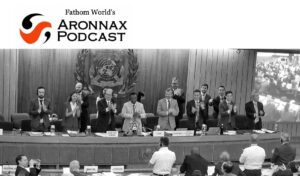

Aronnax: July 3rd

Aronnax: June 19th

Aronnax: June 4th


Aronnax: standards, nurdles, corridors and men


Aronnax: cleantech investing, CCS onboard & how SGS will rent out the wind

Aronnax: Baltic Sea Insights 3 (onboard Finnfellow)

Aronnax: Baltic Sea Insights 2 (onboard Finnlady)

Aronnax: Baltic Sea Insights 1 (onboard Europalink)

Related News


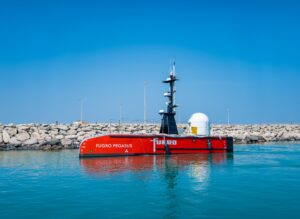
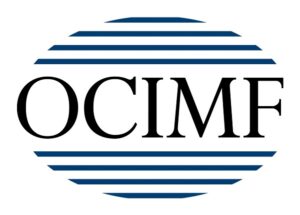

Danelec accelerates the data-driven green transition
